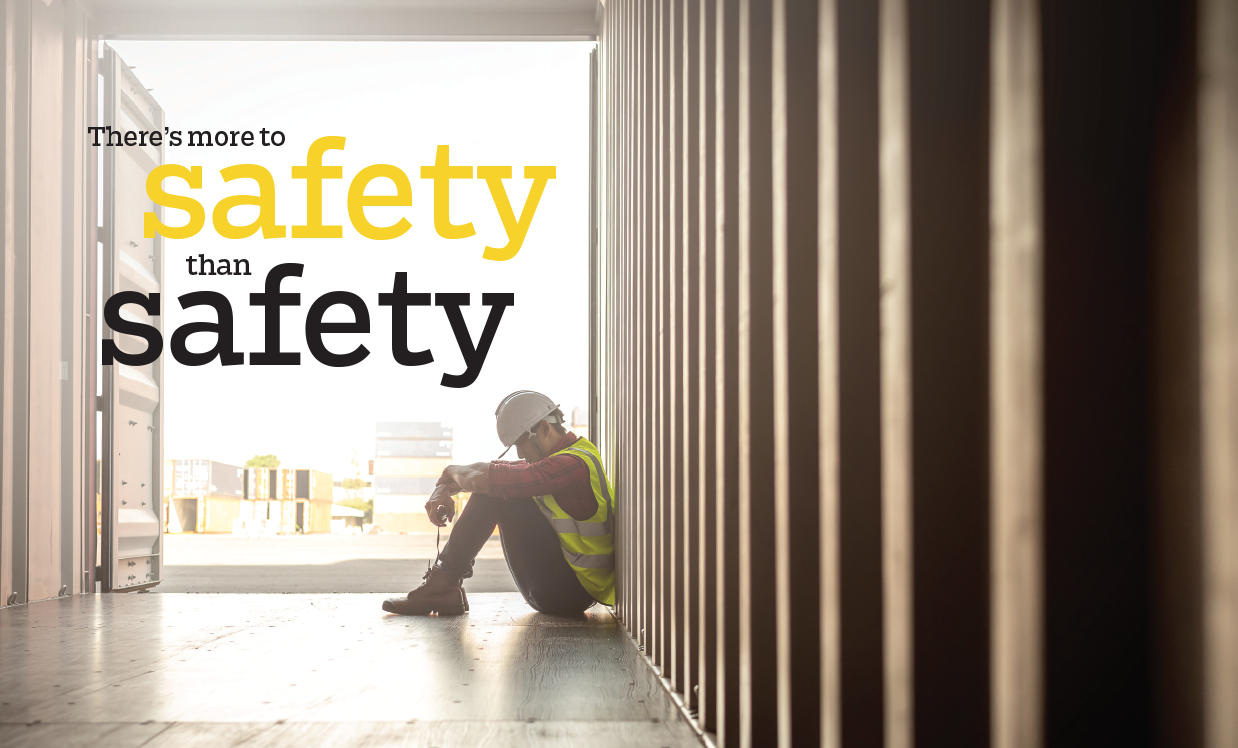
|
Do your employees believe they will be punished or humiliated for speaking up with ideas, questions or concerns? What about for making mistakes?
Chances are, even if you answered “no,” your company still has room for improving what leadership experts have dubbed psychological safety.
David Altman, COO at the Center for Creative Leadership,® explains: “Psychological safety at work doesn’t mean that everybody is nice all the time. It means that you embrace the conflict and you speak up, knowing that your team has your back and you have their backs.”
Unfortunately, many roofing companies—and roofing crews, in particular—are not psychologically safe workplaces. Occasionally, rejection and humiliation may be punishingly intentional but more often careless and coming from a place of unawareness.
Why does it matter?
If your knee-jerk reaction to this topic makes you want to roll your eyes and mutter about people who can’t handle life in general (much less inside a roofing company), try looking at this concept from different perspectives.
First, you need employees, and generally, when you are trying to get more of something, a productive strategy is to cast a wider net. One way to do that is to consider your company’s culture and working conditions and determine whether you may be keeping your net too small.
Are you mostly able to retain individuals who seem impervious to harsh comments, teasing and having a high bar for approval? This has been a typical roofing company culture; however, those entering the workforce or looking to change jobs know they have their pick of many good jobs and companies. In an employee-driven market, people do not need to accept or keep jobs in companies that don’t value them. Psychological safety in the workplace allows people to feel they are welcome to bring their full selves to work. Expecting people to buck up and do their work without question is a practice of the past.
Another reason to address psychological safety is innovation.
Presumably, you want increased efficiencies in production, fewer quality issues and better customer service, which will lead to repeat business. Sure, you and your senior management team can sit around a conference table and come up with new ideas and better ways of doing things, but how much better would those ideas be if those who do the work felt like they could tell you where things are falling through the cracks and how crews could gain efficiency?
Your employees know exactly where significant problems and limiting practices exist. And all the way down the line, employees need to believe they are not risking their self-image, status or career advancement by speaking up. Incidentally, senior management is not immune to this, either, and will not present ideas if their peers or bosses lack good-natured curiosity.
Innovation and growth require new ideas and perspectives, but not feeling safe psychologically has a chilling effect on people being willing to share insights.
A long-term goal
There is no better goal than to have roofing-related falls, slips and trips be a distant memory. But the industry still has a lot of work to do. A critical analysis of all the elements used in the roofing industry to reduce and eliminate falls must be ongoing and focused on ending fall-related injuries and deaths suffered by workers. Building the awareness of and competency in fall protection and prevention through effective training will do just that. Working toward this goal is worthy of the full dedication of the industry and its partners.
LET NRCA HELP YOU NRCA supports creating psychologically safe workplaces and offers several ways to help your company achieve this goal:
Four stages of psychological safety
How can you tell whether your company is a psychologically safe workplace? According to Timothy Clark, author of The 4 Stages of Psychological Safety: Defining the Path to Inclusion and Innovation, there are four levels of psychological safety necessary for employees to progress through before they feel free to consider making valuable contributions or challenge the status quo.
Stage 1 is inclusion safety.
Humans have an innate need to connect with others and belong to a group. At a basic level, this is satisfied by family and friend groups. The corollary at work is the company, department or crew. When employees experience a sense of belonging from co-workers, they feel accepted for who they are, including their unique characteristics and ideas.
Beyond a paycheck, there is little value to staying at a company where there is no feeling of inclusion. People enter the workforce not only to earn a living but also to make meaningful connections with others as they engage in their work. The opportunity to feel part of a team is not achieved in as many spaces as the opportunity to earn a paycheck. If it is missing, your most innovative employees will seek it elsewhere.
Stage 2 is learner safety.
Learner safety satisfies an individual’s desire to learn and grow. Fully engaging in a learning process involves risk of asking questions, giving and receiving feedback, and experimenting and making mistakes. When there is no safety for individuals to expose their lack of knowledge or skill, they are likely to say they know how to do things when they don’t and try to figure things out as they go.
This results in slower work and heightened anxiety and increases the likelihood of mistakes that are likely to be hidden, costing your company time and money.
Stage 3 is contributor safety.
Contributor safety encourages employees in their desire to make a difference through meaningful contributions.
Abraham Maslow, an American psychologist best known for developing his classic hierarchy of needs, classified this desire as “esteem” needs: esteem for oneself (including dignity, achievement, mastery and independence) and the desire for reputation or respect from others (including status and prestige). People want to be regarded as competent and be respected, and there are few places where they exhibit their competencies more than in their workplaces.
According to Marcella Bremer, author of Why do you need to make a difference, every person wants to matter. She suggests once you determine you do not care about making a difference, you have limited some part of yourself to avoid failure or disappointment, protect status or possessions, avoid the hassle, stay safe or some other reason. In other words, lack of psychological safety at work may cause employees to determine it is not in their best interests to bring their ideas, thoughts and efforts into the workplace if they don’t believe they will be well-received. Because of this, a business will lose out on potential ideas, revenue and the full creative genius of employees.
Stage 4 is challenger safety.
Challenger safety opens the gates for employees to consider how to make existing situations better. Do employees feel safe speaking up and challenging the status quo? Do they believe there is an opportunity their insights will be received, or are they more likely to be rebuffed?
Anecdotal evidence suggests many roofing contractors believe they have open-door policies and think their employees feel free to talk to them and make suggestions; however, many employees do not believe this to be the case. This results in a complex problem because not only do employees not feel free to speak up but employers think they do and believe all is well when, in fact, it may not be.
Increasing psychological safety
Employing people who feel included and encouraged to learn is foundational to developing effective work teams. Employing people who feel safe to contribute to and challenge the way things are done is foundational to ensuring effective feedback loops, correcting inefficient practices and developing a workforce that acts on critical thinking skills.
The first two types of safety—inclusion and learner—may make or break an employee’s tenure at a company. Employees who don’t feel they have a place on the team will respond in many ways: Some will soldier on; some will be content to keep to themselves and do their own thing; some will leave; and some will stay and become disgruntled.
To avoid creating an unsafe environment, there are ways to increase inclusion and learning safety:
- Expect those who supervise others to exhibit welcoming postures and hold them accountable for including everyone on the team.
- Consider a budget for donuts or lunch on a new employee’s first day with his or her team.
- Train company employees regarding communication skills and personality differences.
- Assess skills gaps for all employees and establish learning plans for everyone.
- Hire a company trainer whose full-time job is to manage the learning function.
- Incorporate training as a necessary phase of working at your company.
Employees who develop roofing proficiency will enjoy the satisfaction of being contributors at least in terms of their specific work. When the learning function operates effectively, people can contribute to projects and ply their craft, putting their minds to installing quality roof systems, creating solid estimates or confidently engaging with customers.
Contributing also means offering new ideas. Do you discount them? Not all employees want to engage in this type of contribution, but those who do will quickly discern whether you’re interested in what they can bring. Good ideas can come from senior leadership or a young person who has never worked in the office. These are the people who will leave to start their own companies if their present employer is unwilling to let them express their creativity.
What are some ways to increase contribution at your company? You can:
- Be willing to listen to someone with a contribution.
- Incentivize ideas for growing the company.
- Recognize employees who bring ideas that end up getting implemented.
Creating an environment that communicates psychological safety for employees to offer challenges only happens with intention, resolve and courage. Those in positions of authority often have dominant personalities and intense focus on attention to detail. Because of this, they are naturally wired to think they see the best ways to do things and generally do not seek (and often do not welcome) input.
If there is not safety to challenge existing methods and practices, you might miss out on a better way of doing business or identifying problem employees who are causing people to quit and, more important, you may foster an atmosphere of cynicism and negativity.
What are some ways to increase the safety to challenge at your company? You can:
- Affirm those who challenge you.
- Ask for solutions to problem areas and implement good ideas, showing people at all levels of the company their ideas are welcome.
- Be curious. Not all challenges will be easy to hear but try to set aside defensiveness and determine whether there is merit in challenges.
Go beyond the physical
Safety usually conjures images of ladders, personal protective equipment and fall-protection systems, but you could have the safest company in the world according to the Occupational Safety and Health Administration and still be unsafe in psychological ways that matter.
People seek workplaces where they and their ideas are welcome, and creating a psychological safe environment within your company is a significant component of recruiting and retaining employees.
AMY STASKA is vice president of NRCA University.



